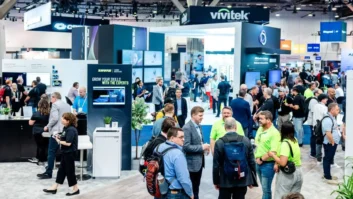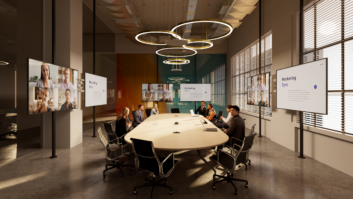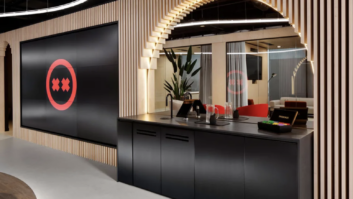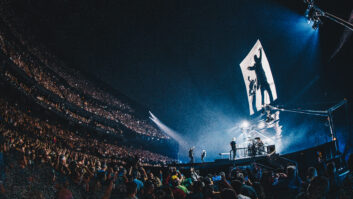 There appears to be a constant stream of new video conferencing hardware announcements over the past couple of years. What new technical developments and products do you think have brought the most change to today’s video conference experience?
There appears to be a constant stream of new video conferencing hardware announcements over the past couple of years. What new technical developments and products do you think have brought the most change to today’s video conference experience?
All in one solutions are now the popular choice. Vendors such as Yealink, DTEN, Avocor and Neat have all released all-in-one solutions with mobile capability. Consisting of a touch display, camera, microphones and speakers, these solutions are perfect for smaller meeting rooms, spaces which lack the ability to hide cabling and are multifunctional.
With HDMI inputs these solutions can be used as a simple display screen which can be flexed up for Native Teams and Zoom or BYOD meetings for a platform agnostic experience. Using Android OS, additional functionality such as Collaborative Whiteboarding and Web Browser are also available on these devices. Flexibility is also important, as these devices can be mounted on a roaming mount.
This means users can also benefit from having one solution that can be wheeled between multiple meeting rooms, rather than purchasing multiple fixed video conferencing solutions. Often, users will use the solutions in breakout and open spaces for group huddles and town hall meetings where the portability factor plays an important part.
Front Row from Microsoft has also been a gamechanger. Front Row is essentially a new layout experience for Microsoft Teams Rooms at the core. With Front Row, remote attendees are seen in the room at eye level and additional desktop Teams meeting features including chat, and a list of participants with raised hands, are shown to the room display.
This provides a better hybrid meeting experience for all and incorporates into the meeting room some of the popular desktop Teams meeting features that users have become accustomed to. Users can select the front row layout from the layout selector experience on the Teams Rooms device panel. It’s an excellent advancement of what users are familiar with.
What do you see as the key driver in VC development, now and in the future, and how are these developments being used to benefit users and operations?
A key development in video conferencing environment is actually not such a new prospect but one that has come full circle. The days of Poly and Cisco immersive solutions with high level integration almost became a thing of the past, I suspect mainly due to the immediate need to equip offices with “plug and play” Teams and Zoom systems to meet a criteria ushered upon us by Covid-19.
However, we are now seeing a rise in demand for the likes of control systems to integrate within the meeting room interface, for a more cohesive and complete experience. More specifically in executive boardrooms, C-Level users want to control functions such as temperature, blinds, lighting and the meeting room display all whilst still being simple and intuitive.
Working alongside Yealink, we have been able to meet this requirement with a simple addition of the Kramer VirtualBrain hardware to provide an additional Room Control Page on Yealink’s MTR Touch panel. This advanced feature enables users to manage other controllable peripherals outside of the Teams hardware, removing the need for an additional panel or keypad which can often become complex.
Simplicity is key, and a single management interface for all networked components is what we can all expect moving forward.
Mergers and closer partnerships are also playing a part in users getting a more streamlined experience. When companies come together it very often means the customer and end-user benefits from combined technologies. An example that is very close to me is the recent Audiocodes partnership with Kramer that allows us to provide fully approved Microsoft Teams Rooms solutions including video bars and compute units to speakers, DSPs, switching, efficient cable management, plus AI recording and analytics for Teams meetings.
What changes have you seen in how Conferencing equipment is being utilised?
We have certainly seen a rise in BYOD meeting spaces over the past year or so, with organisations taking a more platform agnostic approach within their estates. Whilst Teams, Zoom & Webex are ever popular, shared and flexible workspaces require an approach whereby anybody can turn up and start a meeting and collaborate, no matter the hardware or software platform. An “Any device, any Space any Content” approach has been key for Kramer customers in achieving this requirement.
The release of VIA 4.0 firmware has driven efficiency in Education and Corporate settings, allowing users to start a meeting using any meeting platform from their own device and wirelessly connecting to a VIA Connect2 or Campus2 to utilise the connected meeting room peripherals such as cameras, speakers and/or microphones.
Yealink, Logitech and Meeting Owl to name a few have designed tabletop solutions for video and audio. Consisting of 360 degree video using dual panoramic cameras and 360 degree voice pick up microphones using beamforming technology solutions and in built speakers for far end audio. Coupled with intelligent software all participants can be framed equally for a more natural meeting experience.
More vendors have taken steps to create a more immersive environment by releasing solutions for additional video conferencing cameras in the MTR space. Microsoft’s “see and be seen, hear and be heard” promise is a catalyst for this given that not all participants can always be seen equally dependant on the furniture layout within the meeting space.







